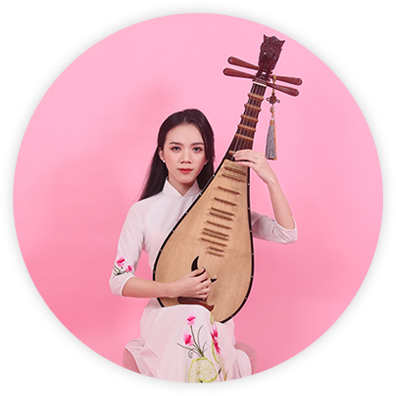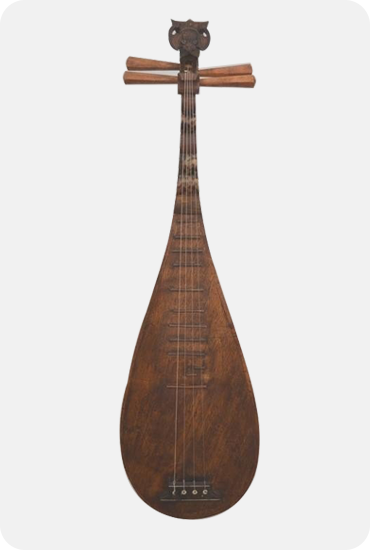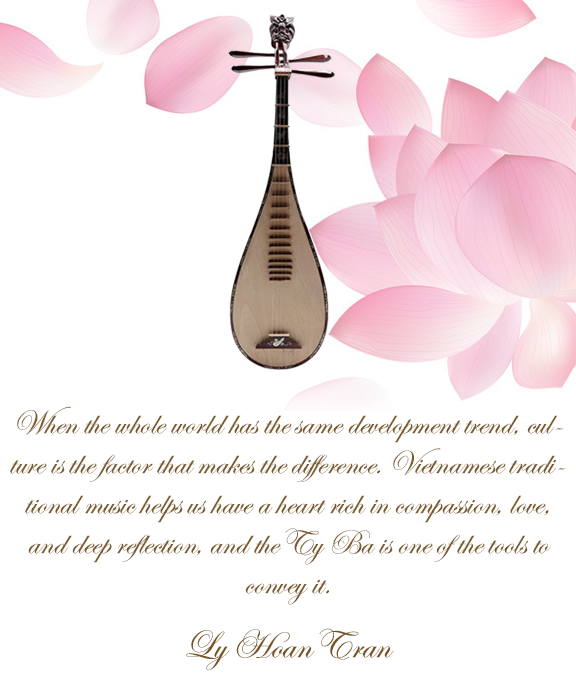

Preface
I was not born in a family with a traditional musical tradition, however, as a predestined relationship, I knew and learned to play the Tỳ Bà Việt Nam.
During my 4 years of intermediate education at the Ho Chi Minh City Conservatory of Music, I found it difficult to find information about the instrument, which made me cherish making this website.
What I want when making this website is to collect all information related to the Ty Ba Viet Nam, bring as much information as possible to you to read. I’m not a researcher, I’m a collector!
When the whole world has a common development trend, culture is the factor that makes the difference. Traditional Vietnamese music helps us to have a heart full of compassion, love, and deep reflection, and the Ty Ba is one of the tools to convey it.
I would like to thank my teacher – Master Nghiem Thu. She was the one who taught me the first fingers, the one who was passionate about the instrument and instilled in me a love for the instrument, so that I could feel that I had a part of the responsibility for the Ty Ba Viet Nam.
In addition, I would like to thank the teachers who have loved and given me more inspiration and valuable information. Thank you to my associates who helped me create Ty Ba Viet Nam.
This website was originally a non-profit, but in the process, I realized I needed a separate source of revenue for it to maintain it. So I have launched a product portfolio, with the desire to both maintain the website and use the proceeds to do useful things for society.
This website is owned by me personally, for general purposes only. I hope to contribute a little effort to protect the value of the Ty Ba Viet Nam.
While collecting information, it is inevitable that there will be errors, please remind readers. For any information support, as well as copyright, please contact: tyba.vn@gmail.com
Sincerely thank!
Ly Hoan Tran
History
The Ty Ba, introduced into our country from the 11th century, was used in the Ly dynasty’s bands (from the 11th century to the 13th century, under the Later Le dynasty, present in the bands Duong Ha Chi Nhac, Dong Van Nha Nhac). (XV century),… Historically, the Ty Ba instrument was also called Tu Huyen Cam (according to the Book of Vietnamese Musical Instruments, author: Prof. Le Thuong).
The Ty Ba was first mentioned in Vietnamese history, when Le Tac recorded in An Nam Chi the name of the small orchestra used outside the Tran court. The Ty Ba Viet Nam is a very ancient form of the Pipa, which came from Persia in the form of the Barbat and Qanbus that followed the Silk Road into China.
The Ty Ba from Persia appeared very early in China with the name PiPa (琵琶), according to some records, about more than 2000 years of history, the Pipa band was introduced along the Silk Road to other countries, over time. Long time use it has been localized differently depending on each region or country: Japan is called Biwa, in Korea is Bipa…
According to Prof. Dr. Tran Van Khe (2000), National Music, Ho Chi Minh City Youth Publishing House, the name “Pipa/Ty Ba” in Chinese is due to the two characters “pi” (Pi/琵) and “grandmother” (Pa/琶) ) create. These two characters are ancient Chinese methods of playing the lute – “pi” is the right hand to pluck the strings down, and “pa” is to pluck up. And so the term “Pipa” is often used in Chinese to describe two different methods of plucking.

Ty Ba Viet Nam - Inspiration
Share
Not being an expert in music in general or traditional musical instruments in particular, learning more about the Ty Ba through this website has brought me a feeling of excitement. I have been fortunate enough to enjoy the sound of the Ty Ba, and it really evokes a sense of familiarity and nostalgia in me.
Enjoying the Ty Ba for me is not only about feeling the sound, but also witnessing the dedication and dedication of the musicians behind it. Their stories have made me feel more grateful and appreciative of the efforts to maintain and develop the Country’s Musical Heritage.
Glimpse through Ty Ba Viet Nam, touched by the love of Traditional Music, History – Traditional Culture, .. in a clear, enthusiastic way..
Personally, I want to thank her for the updated information about the Ty Ba, woaaaa, it turns out that the Ty Ba comes from the land of the story of the Thousand and One Nights!


